Remontability is the ability of plants to flower and bear fruit multiple times during the summer. Initially, varieties of remontant strawberries (garden strawberries) were bred for the southern regions and only then they began to be bred in more northern latitudes.
|
Such remontants produce 2-3 harvests during the growing season. |
Features of remontant varieties
In our country, enough varieties of remontant strawberries have been bred. But both old and modern varieties have a number of features.
- Inflorescences are formed every 35-40 days. The length of daylight hours does not affect the formation of flower buds.
- The higher the temperature, the more active the flowering, so remontant strawberries produce higher yields in the south than in the middle zone. However, it can bloom at temperatures of 8-10°C.
- The spring wave of fruiting produces 10-20% of the berries of the total harvest for the season. The first strawberry is small, the second harvest produces the largest berries of the summer.
- With a warm spring, the first harvest can be harvested as early as May. In the spring sun, overwintered autumn buds bloom, strawberries ripen in 2-3 weeks.
- In most cases, remontant strawberries are not winter-hardy enough.
Strawberries sold in May (if they are not imported) are remontant varieties, which, for obtaining an early harvest in April, cover with film.
Purchase of remontant planting material
In the 90s, there was chaos on the market with varieties. Now trade in varietal material is gradually entering the legal mainstream. Nurseries have legally established restrictions on varietal diversity. They can sell zoned varieties included in the State Register for a given region. Their assortment is small, but all remontant (and not only) varieties are reliable and meet the requirements.
A wider selection is available at agricultural fairs. You need to purchase varieties only from trusted producers: nurseries from other regions, famous collectors, fruit growing institutes.
Varieties of remontant strawberries: characteristics
Although remontant strawberries were bred for warm climates, they are now allowed to be grown throughout the country from the Northern to the Far Eastern climate zones.
Main characteristics of remontant varieties.
- Productivity. It is given in c/ha, but when growing in the country it is more convenient to calculate in kg/m2, or a lot of berries from a bush.
- Mass of berries. The higher it is, the larger-fruited the variety.
- Berry pulp. The denser it is, the longer the strawberries are stored. Dense berries are suitable for transportation.
- Taste. Evaluated in points: 4.5 and above - excellent (dessert) taste; 4.1-4.4 - good (table) taste; 3.6-4.0 - satisfactory taste; below 3.6 points - bad taste.
- Substance content. The more sugar and less acid, the higher the value of the variety. The amount of sugar in the berries determines the taste of the strawberry. Dessert and table varieties are distinguished by their high sugar content.
- The purpose of the variety can be table (for fresh consumption and canning), dessert (for fresh consumption), universal (for processing, canning, fresh consumption). Multi-purpose varieties are suitable for mechanical harvesting and transportation.
All remontant varieties are early ripening, the first harvest is obtained in mid-June (for the Central region). In the south, ripening occurs 2 weeks earlier, in the north (Murmansk, Arkhangelsk regions) later, 7-10 days.
Domestic varieties
There are still few domestic remontant large-fruited varieties, but new ones appear every year. The quality of our repairmen is not inferior to their imported counterparts.
Garland
Description. Early remontant strawberry. The first wave of the harvest begins from June 8-10.
The bushes are spherical, quite decorative in appearance, of medium density.The barb formation is average, the lashes are short green with a pink tint. The berries are conical, shiny, bright red, without a neck. The pulp is light red, juicy, tender. Strawberry has a strong aroma.
- yield 6.1 kg/m2 (1 kg per bush);
- berry weight 26-32 g;
- medium density pulp;
- taste good (4.1);
- dessert purpose.
Advantages. Large juicy berries. The variety is quite winter-hardy and drought-resistant. Very productive.
Flaws. In rainy summers it is affected by fungal diseases (especially powdery mildew). Requires high agricultural technology, otherwise the strawberries will be small and of mediocre taste.
Elizabeth 2
Description. A very productive remontant large-fruited variety. The bushes are erect, powerful, low, semi-spreading with a thick head of leaves. The whisker formation is strong, the whiskers are green, the lashes are medium in size. As soon as the mustache takes root, it immediately begins to bloom. In order not to deplete the plant, the processes of fruiting and establishment should be separated.
The berries are extremely large, regular oval in shape, with a neck, dark red in color, asymmetrical, lumpy, ribbed. Very early ripening. The bushes constantly have flowers, ovaries and fruits. The taste very much depends on agricultural technology.
- yield 3.5 kg/m2 (600 g per bush);
- berry weight 60-90 g;
- the pulp is dense, juicy, sweet and sour with a rich strawberry aroma;
- excellent dessert taste (4.7 points);
- dessert purpose.
Advantages. Very large, tasty berries; there can be up to 5 waves of fruiting during the growing season. Strawberries are stored well without losing their shape. Good transportability, suitable for freezing.
Flaws. With an abundance of moisture, the crop becomes watery and unsweetened.
A more detailed description of the strawberry varieties Elizaveta and Elizaveta 2 can be found in the article “Comparative characteristics of the varieties Koroleva Elizaveta and Elizaveta 2”
Yoke
Description. Strawberries ripen early: in the first ten days of June. The bushes are semi-spreading, the foliage is dense. The variety does not produce whiskers. The berries are of regular conical shape on thick stalks, shiny, rich orange-red color, and have a neck. In bright sun they turn dark red. Strawberries are straight, regular in shape, very sweet.
- yield 1.63 kg/m2 (270 g per bush);
- berry weight 17-23 g;
- the pulp is tender, juicy, sweet and sour, with aroma;
- the taste is excellent (4.6 points);
- substance content: sugar 9%, vitamin C 65 mg/%;
- universal purpose.
Advantages. Excellent quality, high winter hardiness, good disease resistance.
Flaws. Insufficient drought resistance, severely affected by strawberry mite.
Crimean remontant
Description. The bushes are erect with a thick leaf cap. The whiskers are numerous, pale red, on thick lashes. The flowers are white, located below the leaves. The stalks are thin and quickly die when harvested.
The berries are red, broadly blunt-conical, with a neck, and contain more vitamin C than other varieties of strawberries. Fruiting occurs twice: the first wave in April-May (Crimea), the second in August-September. In the northern regions, the first fruiting occurs a month later, the second - 12-16 days later. Plants are long-lasting. They grow in one place for up to 6 years without reducing productivity. Strawberries are decorative and in Crimea they are sometimes planted in flower beds and ridges.
- yield 1.1 kg/m2 (180 g per bush);
- berry weight from 6.5 to 30 g;
- the flesh is pink, juicy, tender;
- taste good (4.1);
- substance content: sugar 6.6%, acid 1.2%, ascorbic acid 86.9 mg/%;
- universal purpose.
Advantages. Excellent winter hardiness and drought resistance, sufficient stability to diseases And pests. Not affected by powdery mildew.
Flaws. Variation in size and unevenness of berries, which cannot be regulated. With a lack of moisture, strawberries become very small.
Lyubasha
Description. Early remontant variety. Strawberries ripen in early June. The bushes are very powerful, spreading with a thick leaf cap. The leaves are medium-sized, pubescent. Doesn't give a mustache. The flowers are white, the stalks are thick.
The berries are conical, regular in shape, red, very sweet with a high content of ascorbic acid.
- yield 1 kg/m2 (170 g per bush);
- berry weight 12-23 g;
- the pulp is sweet with aroma;
- excellent taste (4.9);
- substance content: sugar 12%, ascorbic acid 82 mg/%;
- universal purpose.
Advantages. High winter hardiness, good drought resistance and heat resistance. Disease resistance at standard level.
Flaws. Not resistant to strawberry mite.
Autumn fun
Description. In the middle zone it produces 2 harvests per season: in June and late August-early September. If you cover the bed with film, you can get strawberries until October. In the south there may be 3 waves of fruiting. The bushes are medium-sized, semi-spreading. The formation is moderate.
The berries are small, sweet, and their taste is better than that of other varieties that produce an autumn harvest.
- berry weight up to 20 g;
- the pulp is juicy, pink;
- refreshing, dessert taste;
- universal purpose.
Advantages. Resistance to strawberry mite and nematode, resistance to fungal diseases is above average, a lot of strawberries on one bush.
Flaws. Small berries.
European varieties
Russia has all the best foreign varieties, you just need to make an effort to find them.European remontant strawberries are less winter-hardy than domestic ones. There are many attacks in the spring, but the varietal plot never freezes completely.
Albion
Description. Remontant strawberry of American selection. The leaf cap is large and lush. The plants are very heat-resistant and drought-resistant, growing well in the southern regions of the country. Frost resistance and winter hardiness are insufficient; in the middle zone it freezes even in a relatively warm winter. During the summer they receive 3 harvests: in May, June and September.
The berries are large, dark red with a glossy sheen, regular conical shape with a strong strawberry aroma. They are very elongated and shaped like a small carrot.
- yield 500-600 g per bush;
- the pulp is dense, sickly sweet in ripe berries;
- the taste is excellent.
Advantages. Large strawberries of high quality, the berries are aligned. Weakly affected by fungal diseases
Flaws. Unsuitable for growing in the middle zone. In the south, during winters with frequent thaws, there are many attacks on varietal plantations.
Vima Rina
Description. Remontant Dutch variety. The bushes are semi-spreading, powerful, with a large head of leaves. The foliage is light green and shiny. The whisker formation is not strong, the whiskers are green.
The berries are large, red, conical in shape, with a neck, on thin stalks, and quickly lie down when filled.
- yield 0.85 kg/m2 (140 g per bush);
- the pulp is dense, tender, sweet and sour, juicy, aromatic;
- excellent dessert taste (4.8);
- substance content: sugar 8.3%;
- universal purpose.
Advantages. It is resistant to drought and heat, it is almost impossible to overheat it, even in the south. It is well transported and stored for 5-7 days.
Flaws. Low yield per bush, insufficient winter hardiness.
Elizabeth
Description. A very large-fruited variety of English selection. The bushes are powerful with large shiny leaves. Whisker formation is insignificant. To breed Elizabeth, whiskers should be taken in the first year of cultivation, since in subsequent years she practically does not produce whiskers. Blooms in waves 2 times per summer (more in the south). The harvest is obtained in late May, July and early September.
The berries are very large, shiny, juicy, sweet. Only strawberries that have not completely reddened can have sourness.
- yield 350-400 g per bush;
- berry weight 30-45 g;
- the pulp is dense, juicy, tender, with aroma;
- excellent dessert taste;
- universal purpose.
Advantages. Excellent quality strawberries, continuous fruiting throughout the summer. The berries are well transported without being damaged. The bushes are practically not affected by gray rot and powdery mildew.
Flaws. Insufficient winter hardiness. The service life of a varietal plantation is 2-3 years, then the berries are smaller.
Semi-remontant varieties
Some varieties of strawberries, long grown by summer residents, are semi-remontant: Zenga Zengana, Talisman, Boheme, Red Gontled. They lay flower buds in cold spring, the second wave of fruiting occurs in August. The berries are large, but there are not many of them; fruiting lasts until September. In warm springs, semi-remontants do not bloom again and produce only one harvest.
Bohemia
Description. An excellent variety of domestic selection. Recommended for cultivation in the Central region. Late ripening period (from July 10-15). The bushes are powerful with a thick head of foliage. The mustache is thick, bright green.
The berries are on thick long stalks, large, conical in shape without a neck, dark red in color, shiny. It is a source of ascorbic acid.
- yield 1 kg/m2 (170 g per bush);
- berry weight 16-24 g;
- pulp is dense, juicy
- the taste is excellent (4.5 points);
- substance content: sugar 9.9%, acid 0.9%, ascorbic acid 99.8 mg/%;
- The purpose of the variety is universal.
Advantages. Drought resistance, winter hardiness, high yield, resistance to diseases and pests are above standard. Suitable for mechanical cleaning and transportation over distances of up to 90-100 km.
Flaws. In the middle zone and further north, even under favorable conditions, it often does not have time to produce a second harvest.
Zenga Zengana
Description. A very old German variety. Was put out for freezing. Strawberries are firm, do not get soggy, and retain their shape after defrosting.
The berries are medium-sized, dense, red, shiny. In bright sun they can take on a dark red color.
- weight 16-20 g;
- the pulp is juicy, sweet and sour, with aroma;
- taste good;
- universal purpose.
Advantages. Suitable for long distance transportation and freezing. The plants are unpretentious; they grow well in any conditions of our country. Resistant to powdery mildew.
Flaws. Strawberries are not resistant to strawberry mite, gray rot and leaf spot.
It is impossible to choose a good strawberry based on description alone. There are no bad varieties. To assess product quality, any variety must be grown and tested under real conditions. This is the only way he can reveal his qualities or not show them at all. It all depends on the skill of the gardener.
Looking for strawberries for your garden? Then this is for you:
- The best varieties of strawberries with photographs and descriptions. New, promising and productive.
- Strawberry Elizaveta and Elizaveta 2 description and reviews. How do these varieties differ and which one should you choose?
- Strawberry Gigantella Maxim. Consider whether it is worth planting.
- Strawberries Festival, reviews and care recommendations. Indestructible Festival, why it is still loved by gardeners.
- Asia description of the variety. Capricious Asia, how to grow it.
- Lord description of the variety. An unpretentious and productive Lord.
- Strawberry Honey. An undemanding and productive variety, but more suitable for processing.
- Vima Kimberly: description and agricultural technology. A universal strawberry, loved by gardeners in all regions.
- Clery: description of the variety, reviews and brief agricultural technology. Strawberries that love the sun very much.
- Alba strawberries: description, reviews and agricultural technology. A very good variety for sale in the market.
- Varieties are weeds in strawberry plantations. Where do they come from?
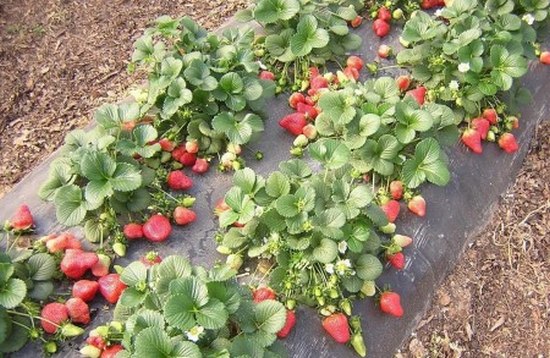
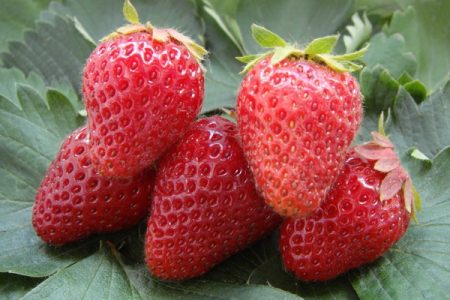
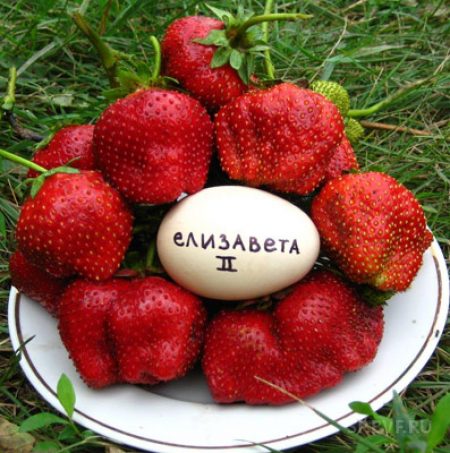
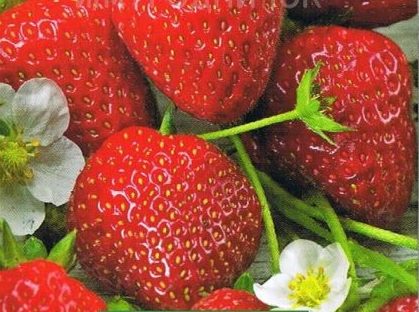

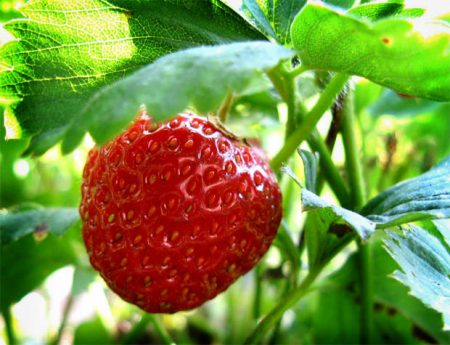

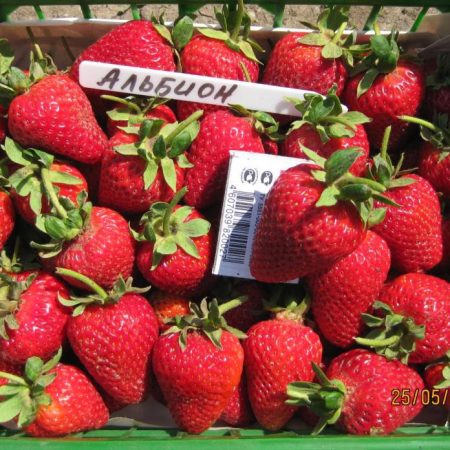
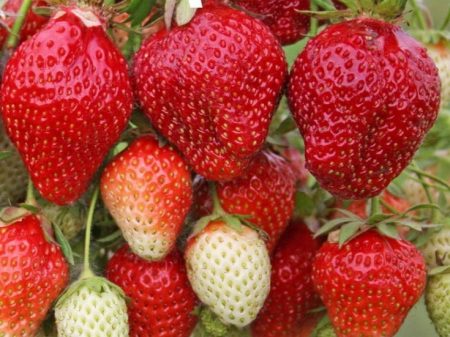
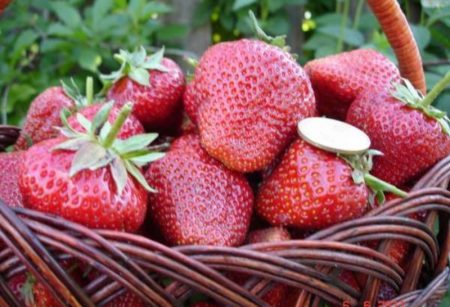
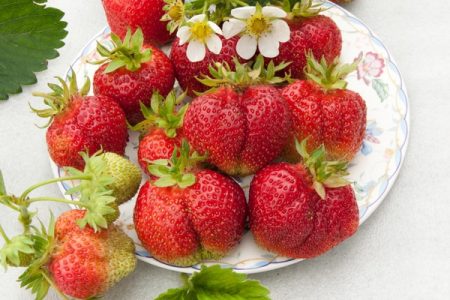
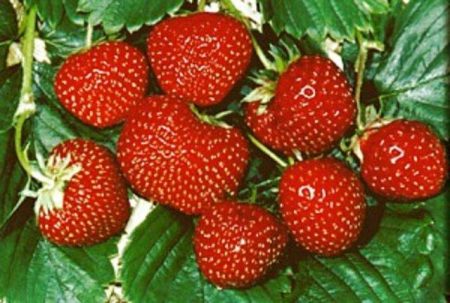


 (18 ratings, average: 3,50 out of 5)
(18 ratings, average: 3,50 out of 5) CUCUMBERS NEVER GET SICK, I'VE BEEN USING ONLY THIS FOR 40 YEARS! I SHARE A SECRET WITH YOU, CUCUMBERS ARE LIKE THE PICTURE!
CUCUMBERS NEVER GET SICK, I'VE BEEN USING ONLY THIS FOR 40 YEARS! I SHARE A SECRET WITH YOU, CUCUMBERS ARE LIKE THE PICTURE! You can dig a bucket of potatoes from each bush. Do you think these are fairy tales? Watch the video
You can dig a bucket of potatoes from each bush. Do you think these are fairy tales? Watch the video
 How our fellow gardeners work in Korea. There is a lot to learn and just fun to watch.
How our fellow gardeners work in Korea. There is a lot to learn and just fun to watch. Eye trainer. The author claims that with daily viewing, vision is restored. They don't charge money for views.
Eye trainer. The author claims that with daily viewing, vision is restored. They don't charge money for views. A 3-ingredient cake recipe in 30 minutes is better than Napoleon. Simple and very tasty.
A 3-ingredient cake recipe in 30 minutes is better than Napoleon. Simple and very tasty. Therapeutic exercises for cervical osteochondrosis. A complete set of exercises.
Therapeutic exercises for cervical osteochondrosis. A complete set of exercises. Which indoor plants match your zodiac sign?
Which indoor plants match your zodiac sign? What about them? Excursion to German dachas.
What about them? Excursion to German dachas.
The site is not for sale.